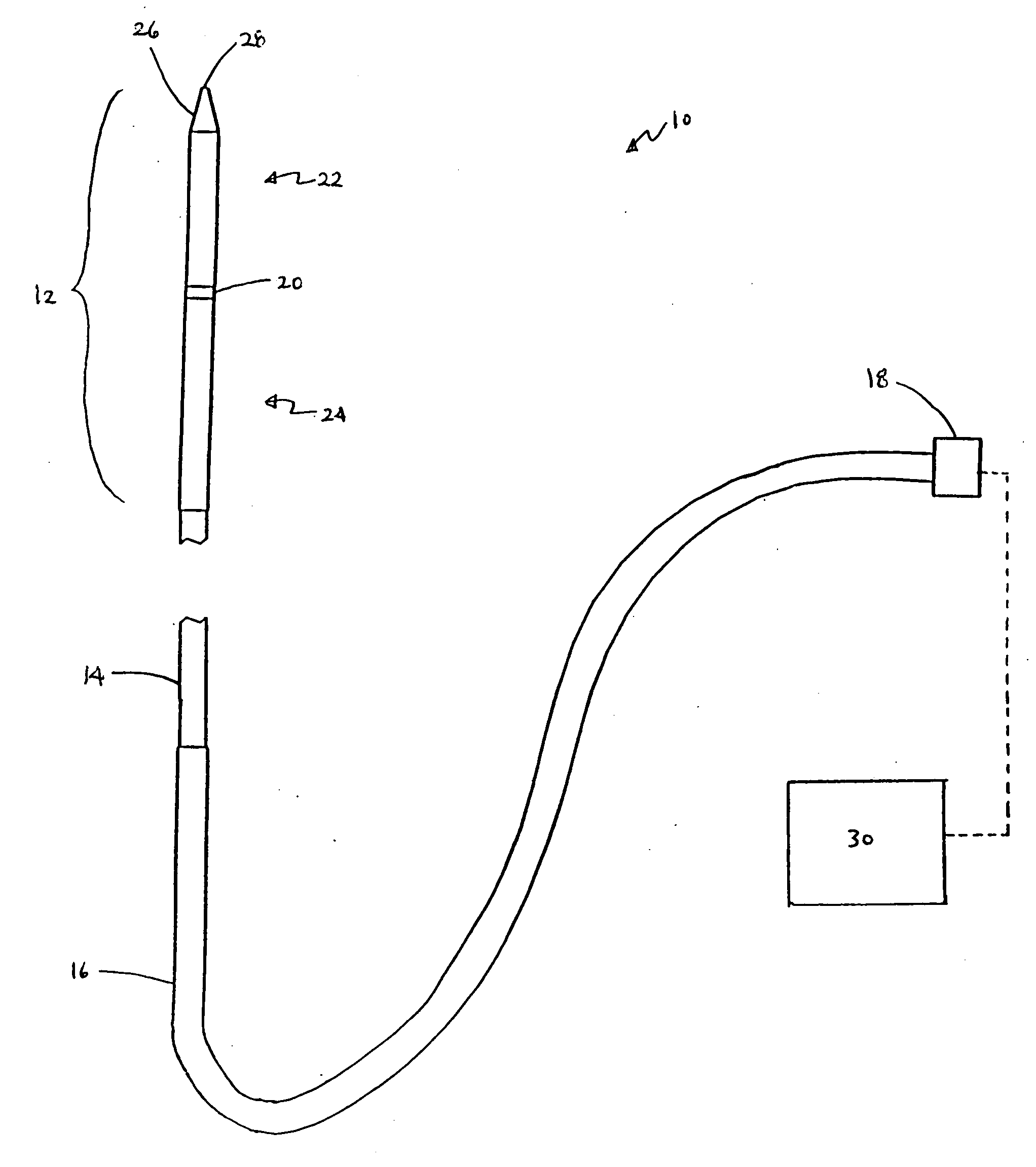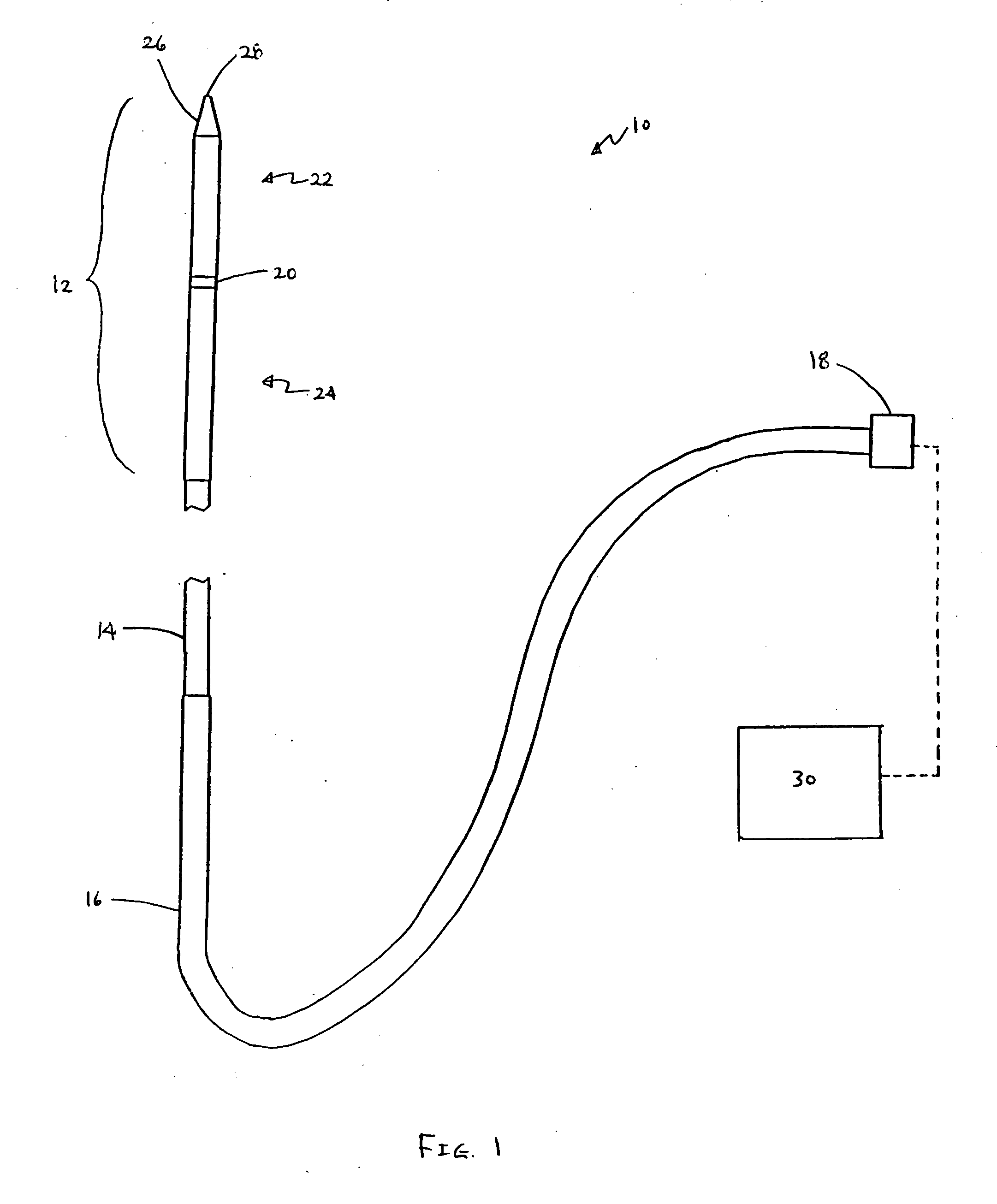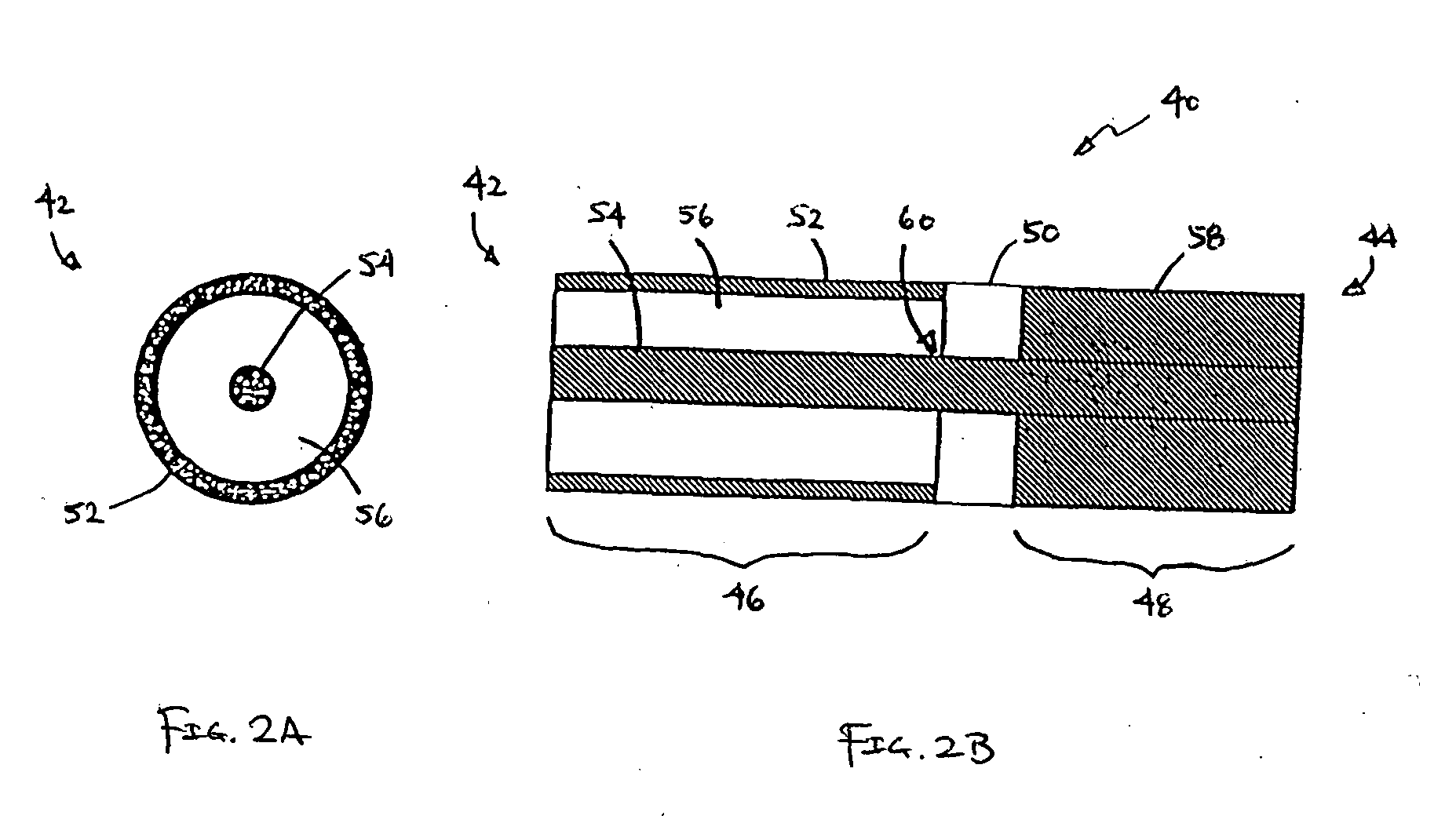Devices and methods for cooling microwave antennas
a microwave antenna and cooling device technology, applied in the field of microwave antennas, can solve the problems of unnecessarily ablating excess tissue, increasing the temperature of the feedline or shaft of the antenna, pain and other complications,
- Summary
- Abstract
- Description
- Claims
- Application Information
AI Technical Summary
Benefits of technology
Problems solved by technology
Method used
Image
Examples
Embodiment Construction
[0057] Various microwave antenna assemblies and cooling systems, as described herein, are less traumatic than devices currently available and as described in further detail below. Generally, in invasively treating diseased areas of tissue in a patient, trauma may be caused to the patient resulting in pain and other complications. One cause of trauma may result from excess tissue being unnecessarily ablated by the microwave antenna assembly. As the microwave antenna transmits microwave energy, the feedline or shaft of the antenna, as well as the radiation portion, may increase in temperature due to ohmic heating. Tissue in contact with a surface of the antenna may thus become charred or ablated unnecessarily. Aside from unnecessary trauma, charred tissue may decrease the effectiveness of the microwave antenna because of the changing impedance of the tissue as it dries out and becomes charred. The cooling systems, as described herein, may be used in conjunction with various types of m...
PUM
 Login to View More
Login to View More Abstract
Description
Claims
Application Information
 Login to View More
Login to View More - R&D
- Intellectual Property
- Life Sciences
- Materials
- Tech Scout
- Unparalleled Data Quality
- Higher Quality Content
- 60% Fewer Hallucinations
Browse by: Latest US Patents, China's latest patents, Technical Efficacy Thesaurus, Application Domain, Technology Topic, Popular Technical Reports.
© 2025 PatSnap. All rights reserved.Legal|Privacy policy|Modern Slavery Act Transparency Statement|Sitemap|About US| Contact US: help@patsnap.com



